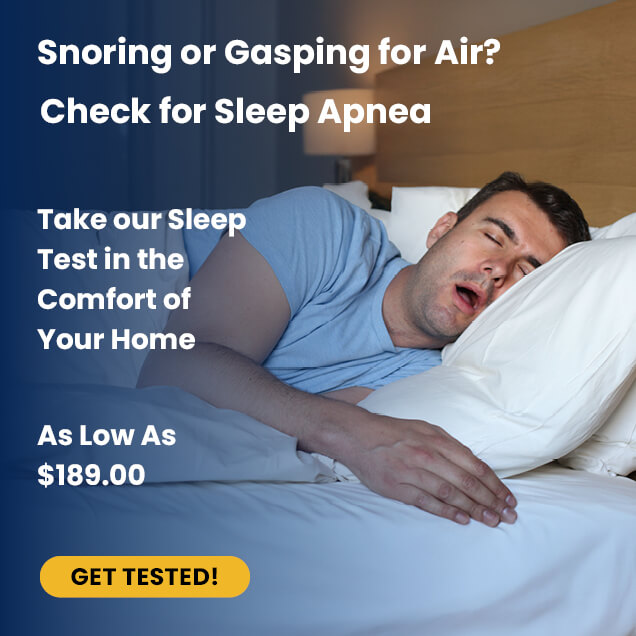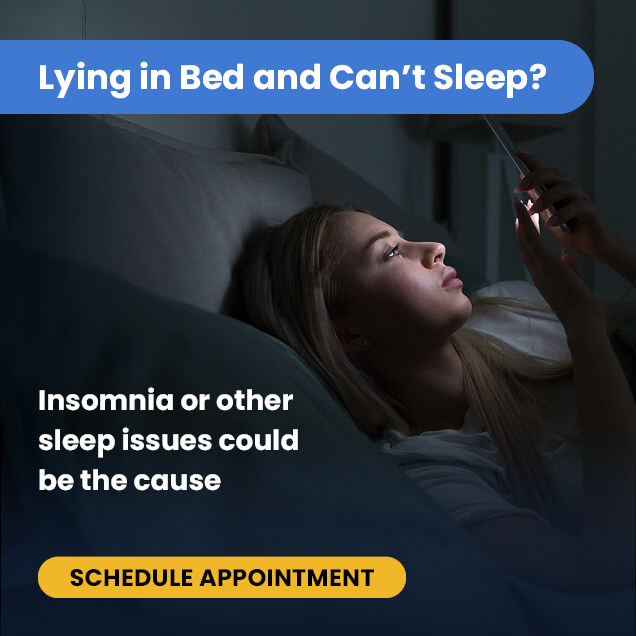Causes | Symptoms | Risk Factors | Diagnosis | Treatment
Overview
Obstructive Sleep Apnea (OSA) is a breathing-related sleep disorder that’s common is adults; however, infants, children, and teenagers can have it, too.
OSA causes disturbances during sleep due to breathing interference. If left untreated, it can lead to cardiovascular and growth issues, in addition to learning and behavioral problems.
Early detection and diagnosis are crucial to reducing the development of future diseases related to OSA; however, misperceptions regarding the disorder can lead to delayed diagnosis in children.[1] [2]
This article will look at the causes, epidemiology, symptoms, risk factors, diagnosis, and treatment options for pediatric OSA.
Causes
There may be several causes of OSA, which may differ from child to child. The most common cause of OSA in children is enlarged tonsils and adenoids.
Anatomical or genetic issues that involve the collapsibility of the upper airway can also be a factor, including neurologic, skeletal or dental conditions.[3]
Obesity is less likely a factor in the development of OSA in younger children and more so in adolescents.
Epidemiology
A cross-section of 829 urban children, ages 8 to 11, were recruited for an unattended in-home sleep study, which revealed that 40, or 5%, of the children were classified as having OSA. Two of the 40 kids were reported by the parents as having behavioral problems. [4]
A review of medical literature from 1999 to 2011 concludes that pediatric OSA occurs in 1 to 5 percent of children. Symptoms of OSA are most common between the ages of two and six years. [5]
Symptoms
Contrary to the typical symptoms of OSA in adults, daytime sleepiness may not present as an obvious symptom of OSA in children. Pediatric symptoms include:
- Problems breathing while asleep
- Atypical movements or behavior before or during sleep
- Sleep disturbances and sleep arousals
- Difficulty focusing during the day
- Behavioral problems
- Irritability
- Hyperactivity
- Insomnia
- Anxiety and depression, especially in adolescents
- Difficulty falling or staying asleep
- Habitual snoring (≥3 nights a week)[6]
Risk Factors
- Obesity (more common in adolescents than in children)
- Enlarged tonsils and adenoids
- Orthodontic problems: crossbite, high narrow hard palate, and tooth loss
Infants who have OSA symptoms can have an implicit genetic or anatomic anomaly, such as:
- Cerebral palsy
- Malformations of the face
- Low birth weight
- Muscular dystrophy or other neuromuscular disorders
- Spina bifida
- Dwarfism
- Metabolic disorders
- Prader-Willi syndrome
- Premature birth or multiple gestations
- Genetics[6]
Diagnosis
Your child’s primary care physician will most likely do the initial examination for OSA. If OSA is suspected, a referral should be made to a sleep medicine specialist.
To diagnose your child with OSA, the doctor will take the child’s sleep history and look for difficulty breathing while sleeping, snoring, issues with focusing during the day, learning and behavioral issues, and sleepiness.
The doctor will examine your child’s growth and check their heart and lungs to see any pulmonary hypertension. Your child’s head, nose, and mouth will also be examined. The doctor may recommend polysomnography (sleep study), a diagnostic tool that can test the condition’s severity.
For a child to be positively diagnosed with OSA, polysomnographic (PSG) criteria and clinical criteria must be present. The following are additional tools that can be used for diagnosis:
- Nap PSG: A daytime short-term sleep test is done in a sleep center, which is reserved mainly for infants and young children
- Overnight Pulse Oximeter: A device that non-invasively monitors blood-oxygen levels
- Home Audio/Video: Records breath and sounds during sleep
- Home sleep apnea tests (HSATs): Studies have shown that while these devices are routinely used to treat adults, they are ineffective in correctly diagnosing children[7]
PSG Criteria:
- At least one hypoapnea, obstructive apnea, or mixed apnea must be present every hour of sleep
- Obstructive ventilation must be present for at least 25 percent of sleep time, in addition to one or more of the following: paradoxical thoracoabdominal motion, snoring, flattening of the nasal pressure waveform[8]
Treatment
There are various ways to treat OSA. Sometimes more than one type of therapy may be needed to treat a child properly. The course of treatment will be based upon your child’s specific needs.
There are non-surgical and surgical approaches to treating OSA in children. The doctor will discuss with you which course of treatment may be best for your child.
Adenotonsillectomy, the removal of the tonsils and adenoids, is the most common surgical treatment for severe OSA; however, the management of less severe cases of pediatric OSA is less clear.
A recent study of 60 children, ages 2 to 5, with mild to moderate OSA had substantial improvements in quality of life after an adenotonsillectomy, compared to a strategy of watchful waiting.
Postponing surgery and observing the child for 6 months is an option, but may lead to a higher risk of symptom duration, namely behavioral and sleep issues.[9]
Non-surgical Treatment Options (Mild to Moderate)
- Watchful waiting up to 6 months
- Continuous positive airway pressure
- Oral Appliances: rapid maxillary expansion (RME) or mandibular advancement device
- Corticosteroids or anti-inflammatory therapy
- Physical therapy that strengthens and repositions tongue and orofacial muscles
- Weight loss
Surgical Treatment Options (Severe Cases)
- Adenotonsillectomy
- Uvulopalatopharyngoplasty (UPP) to remove or remodel throat tissue
- Reducing the size of the tongue
- Lengthening the lower jaw
- Hypoglossal nerve stimulation, which involves having a device placed inside the chest
- Expansion sphincter pharyngoplasty
- Lateral pharyngoplasty
- Reducing the size of the base of the tongue
Conclusion
Proper identification and diagnosis of OSA is essential, as studies show that it can affect a child’s overall wellbeing. Being aware of how OSA symptoms present in children will help you identify any issues earlier. If your child shows possible OSA symptoms, set up an appointment to speak with your child’s doctor.
References:
[1] Brouillette, R. T., Fernbach, S. K., & Hunt, C. E. (1982). Obstructive sleep apnea in infants and children. The Journal of pediatrics, 100(1), 31–40. https://doi.org/10.1016/s0022-3476(82)80231-x
[2] Richards, W., & Ferdman, R. M. (2000). Prolonged morbidity due to delays in the diagnosis and treatment of obstructive sleep apnea in children. Clinical pediatrics, 39(2), 103–108. https://doi.org/10.1177/000992280003900205
[3] Qubty, W. F., Mrelashvili, A., Kotagal, S., & Lloyd, R. M. (2014). Comorbidities in infants with obstructive sleep apnea. Journal of clinical sleep medicine : JCSM : official publication of the American Academy of Sleep Medicine, 10(11), 1213–1216. https://doi.org/10.5664/jcsm.4204
[4] Rosen, C. L., Storfer-Isser, A., Taylor, H. G., Kirchner, H. L., Emancipator, J. L., & Redline, S. (2004). Increased behavioral morbidity in school-aged children with sleep-disordered breathing. Pediatrics, 114(6), 1640–1648. https://doi.org/10.1542/peds.2004-0103
[5] Marcus, C. L., Brooks, L. J., Draper, K. A., Gozal, D., Halbower, A. C., Jones, J., Schechter, M. S., Ward, S. D., Sheldon, S. H., Shiffman, R. N., Lehmann, C., Spruyt, K., & American Academy of Pediatrics (2012). Diagnosis and management of childhood obstructive sleep apnea syndrome. Pediatrics, 130(3), e714–e755. https://doi.org/10.1542/peds.2012-1672
[6] Ibid, 1
[7] Tan, H. L., Kheirandish-Gozal, L., & Gozal, D. (2015). Pediatric Home Sleep Apnea Testing: Slowly Getting There!. Chest, 148(6), 1382–1395. https://doi.org/10.1378/chest.15-1365
[8] American Academy of Sleep Medicine. International Classification of Sleep Disorders, 3rd ed, American Academy of Sleep Medicine, Darien 2014.
[9] Fehrm, J., Nerfeldt, P., Browaldh, N., & Friberg, D. (2020). Effectiveness of Adenotonsillectomy vs Watchful Waiting in Young Children With Mild to Moderate Obstructive Sleep Apnea: A Randomized Clinical Trial. JAMA otolaryngology– head & neck surgery, 146(7), 647–654. https://doi.org/10.1001/jamaoto.2020.0869






